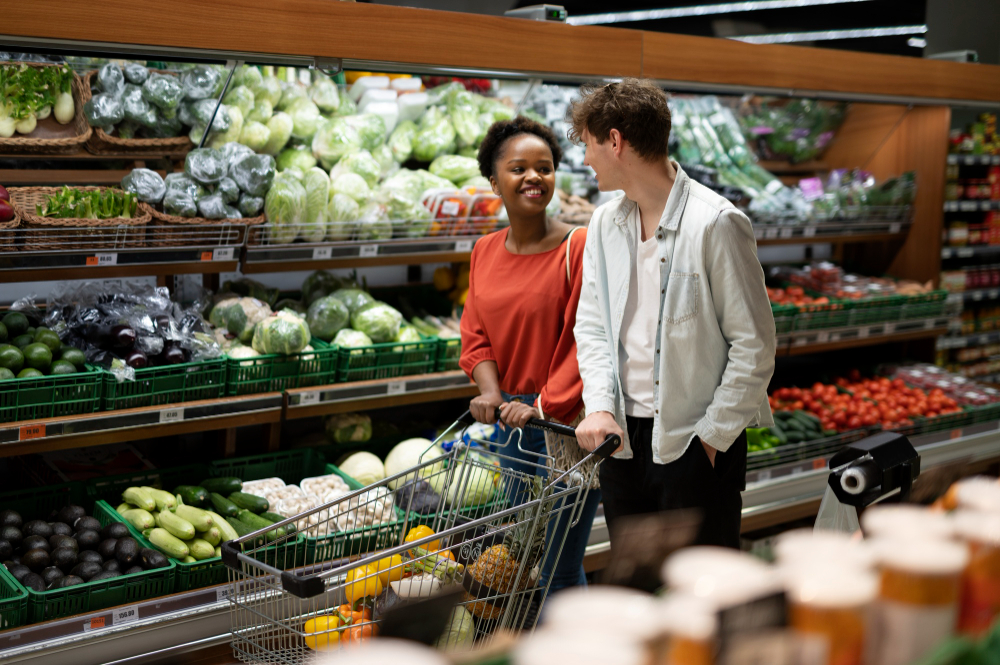10 Tips for Designing an Efficient Supermarket Layout

Why Your Supermarket Layout Matters
A great supermarket layout does more than look good—it guides customers through your store, encourages impulse purchases, and keeps operations smooth. In Nigeria, where shoppers value convenience and local products like fresh produce and staples, your layout must cater to these preferences while competing with open-air markets. A smart design can increase foot traffic, reduce congestion, and make your store the go-to choice. Let’s dive into our 10 tips to create an efficient, customer-friendly supermarket layout.
10 Tips for an Efficient Supermarket Layout in Nigeria
-
Plan for Customer Flow
Guide customers through your store with a logical flow. Most shoppers naturally move right upon entering, so place high-demand items like fresh produce or bread on the right to draw them in. Use a loop or grid layout to ensure they pass key sections. In Nigeria, where customers often prioritize staples like rice and yam, place these early in the flow to meet expectations.
Tip: Use clear signage and wide aisles to prevent congestion, especially during peak hours.
-
Prioritize Fresh Produce Displays
Nigerian shoppers love fresh fruits, vegetables, and tubers. Place produce near the entrance to create a vibrant, welcoming atmosphere. Use high-quality display racks from Afess.ng to showcase items attractively and keep them fresh.
Tip: Rotate stock regularly and use misting systems for vegetables to maintain freshness.
-
Create Thematic Zones
Group related products into zones, like a “baking essentials” section with flour, sugar, and oils. This makes shopping intuitive and encourages cross-selling. For example, place spices near grains to inspire meal planning, a key consideration for Nigerian customers cooking traditional dishes.
Tip: Use shelving units from Afess.ng to create distinct, organized zones.
-
Optimize Aisle Width and Spacing
Wide aisles accommodate Nigeria’s busy shopping crowds, especially during festive seasons. Aim for at least 1.2 meters for main aisles and 0.9 meters for secondary ones to allow trolleys and baskets to pass comfortably.
Tip: Test your layout during peak times to ensure smooth movement.
-
Place Impulse Items Strategically
Position high-margin items like snacks, drinks, or small gadgets near checkout counters or high-traffic areas. In Nigeria, items like chin-chin or bottled drinks are popular impulse buys.
Tip: Use eye-catching display stands from Afess.ng to highlight these products.
-
Ensure Accessibility for All
Make your store inclusive with ramps, clear signage, and reachable shelves. In Nigeria, where family shopping is common, ensure aisles are wide enough for strollers or wheelchairs.
Tip: Install low shelving for children or elderly customers to access popular items.
-
Use Effective Lighting
Bright, even lighting enhances product visibility and creates a welcoming vibe. LED lights are energy-efficient, crucial in Nigeria’s high-energy-cost environment. Highlight fresh produce and meat sections with focused lighting.
Tip: Check Afess.ng for energy-efficient lighting solutions for your store.
-
Incorporate Clear Signage
Clear, bold signage helps customers navigate, especially in multilingual Nigeria. Use signs in English and local languages like Yoruba or Igbo for key sections. Include directional signs for restrooms and checkouts.
Tip: Use durable, professional signs to enhance your store’s credibility.
-
Plan for Efficient Checkout Areas
Long queues frustrate customers, so design multiple checkout counters with enough space for bagging. In Nigeria, cash payments are still common, so ensure counters accommodate cashiers and card machines.
Tip: Invest in reliable checkout counters from Afess.ng to speed up transactions.
-
Adapt to Local Competition
Compete with Nigeria’s open-air markets by emphasizing convenience, cleanliness, and variety. Offer promotions on local staples and create a modern shopping experience to attract customers from traditional markets.
Tip: Use Afess.ng’s display units to showcase deals and draw attention.
Navigating Nigeria’s Retail Challenges
Designing a supermarket in Nigeria comes with unique considerations:
- Power Reliability: Frequent outages require backup generators for refrigeration and lighting. Choose energy-efficient equipment from Afess.ng to reduce costs.
- Local Preferences: Nigerian shoppers prioritize fresh produce and affordable staples. Highlight these with prominent displays and competitive pricing.
- Space Constraints: Urban stores in Lagos or Abuja may have limited space, so opt for compact, modular shelving and displays.
Where to Find Supermarket Equipment in Nigeria
To bring your layout to life, you’ll need quality equipment. Here’s where to shop
- Specialized Suppliers: Afess.ng provides high-quality supermarket equipment, from shelves to refrigeration units, with expert advice and prompt delivery.
- Local Fabricators: For custom solutions, work with local fabricators, but ensure quality matches your brand’s standards.
Contact Afess.ng via their WhatsApp chat for personalized quotes and support.
Your Supermarket Layout Checklist
Use this checklist to design an efficient layout:
- Map customer flow to guide shoppers logically.
- Highlight fresh produce near the entrance.
- Create thematic zones for easy navigation.
- Ensure wide aisles for busy shopping periods.
- Place impulse items near checkouts.
- Make the store accessible with ramps and low shelves.
- Use bright, energy-efficient lighting.
- Install clear, multilingual signage.
- Design efficient checkout areas to reduce queues.
- Compete with local markets through promotions and variety.
Conclusion: Build a Supermarket That Thrives
An efficient supermarket layout is your secret weapon to stand out in Nigeria’s competitive retail scene. By following these 10 tips, you can create a store that’s easy to navigate, appealing to customers, and optimized for sales. Ready to get started? Explore high-quality equipment at Afess.ng or browse Jiji.ng for affordable options. Transform your supermarket into a customer favorite today!